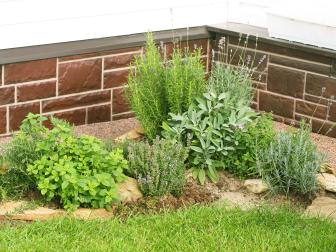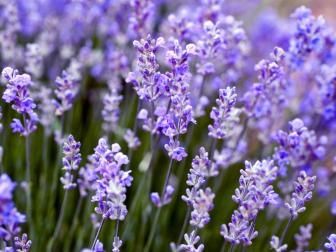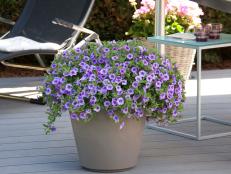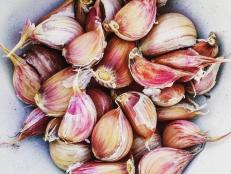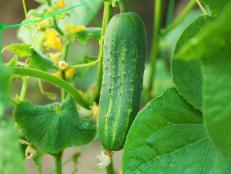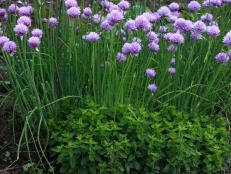How to Grow and Harvest Rosemary
If planted in the right spot, rosemary is very easy to grow. Find expert advice and simple ideas for growing and using rosemary plants.
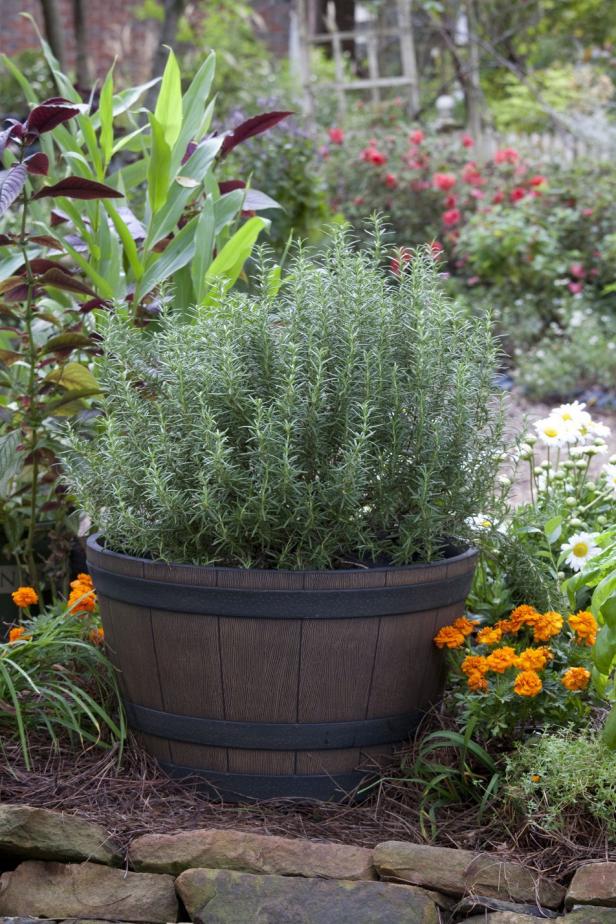
Bonnie Plants
Rosemary grows well in the ground or in a container, where it's easier to provide the alkaline soil and good drainage that this Mediterranean herb prefers.

Rosemary gets its name from the Latin rosmarinus, which means "dew of the sea." While this name references water twice, growing rosemary requires careful attention to not provide too much water. The name really points to rosemary's origins on the Mediterranean coast where the soils (and air) are dry and drain extremely well. Knowing this is key to successfully growing rosemary in your herb or vegetable garden, container garden or landscape.
Botanical Name: Salvia rosmarinus (formerly Rosmarinus officinalis)
Common Name: Rosemary
Plant Type: Perennial herb, semi-shrub
Bloom Time: Summer
Light Needs: Full sun
Soil Needs: Drier, well-draining, slightly alkaline
Hardiness Zones: 7 to 10
Size: Up to 5 feet tall and wide, depending on variety
Planting and Growing Rosemary
Rosemary is a perennial, though it's not hardy in all areas, meaning it won't stay alive through winter without some special care. See advice on overwintering (below) if you're in zones 6 and below.
Otherwise, the trick to growing rosemary, whether in a pot or in the ground, is to keep the soil — and therefore the plant's roots — on the drier side. Think about rosemary's native habitat on the Mediterranean coast and try to mimic those conditions as best you can. Rosemary also requires full sun, which can help the plant and soil stay dry.
This aromatic herb grows well in basic, unglazed clay containers, which dry out quickly. In the ground, plant it where the ground drains well and won't get soggy. And don't overwater — spritzing the leaves and soil will be better than soaking it. Containers may need to be repotted once a year or so to stay happy, healthy and uncrowded.
Rosemary prefers an alkaline soil. When planting in a pot or in the ground, amend the soil or potting mix with a little crushed limestone to raise the pH. Position the plant with the top of the roots slightly exposed; cover the last half-inch with coarse sand instead of soil. This ensures excellent drainage near the crown.
Companion Planting With Rosemary
The evergreen-like aroma of this shrub is known to deter pests of all brassicas (broccoli, cabbage, kale, Brussels sprouts, and others), beans and carrots. It's common practice to plant rosemary on the edge of a vegetable garden to provide benefits of a companion plant without stealing resources (water and nutrients) from annual vegetables. Remember that rosemary can spread to a few feet tall and wide, and plant it on the north side of the garden to avoid it shading other plants as it gets larger.
Overwintering Rosemary
Rosemary is hardy to about 20 degrees F, so gardeners below zone 7 will do best to grow it in containers that can be brought inside during winter. Rosemary is fussy about its winter quarters. Place in a cool sunroom or enclosed sunny porch. Temperatures should drop into the low 50s at night, and reach near 70 degrees during the day. Water just enough to keep the soil damp at all times, and use pebble trays to keep humidity high.
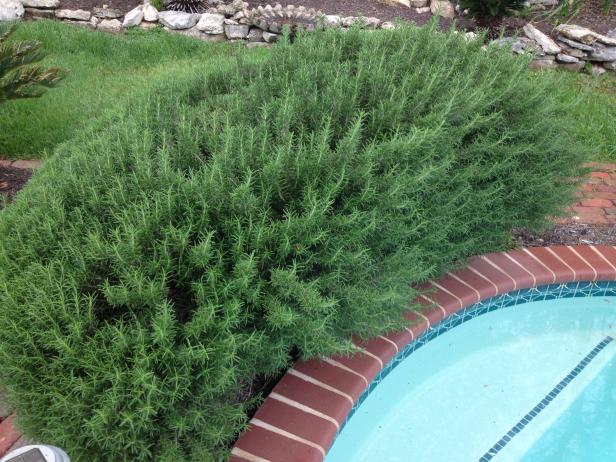
Here, rosemary is grown and maintained (through pruning) as a hedge around a pool. The placement between bricks helps these plants by warming up the soil and improving the drainage.
How to Prune Rosemary
This shrub can take a hard pruning annually to keep the size in check. You can cut back using pruners in spring through summer. Focus pruning on the more tender, newer stems to keep the plant growing back. Cutting into the dense, woody, older branches will alter the shape and spread of the plant but not stimulate new growth — sometimes, that will be your aim.
Propagating Rosemary From Cuttings
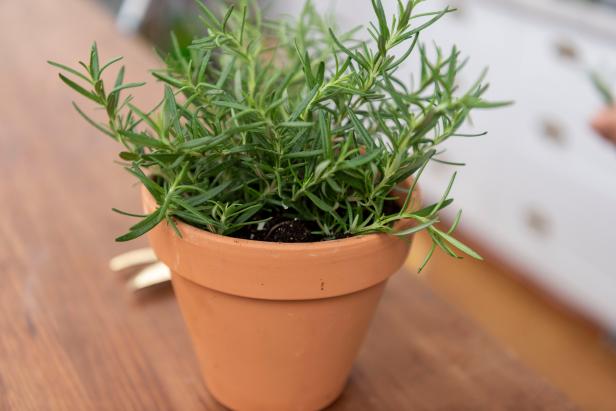
Sarah Busby
Rosemary transplants can be created by rooting cuttings from an existing plant.
It's possible to grow rosemary from seed, but it has low germination rates and takes a long time to grow from seed to transplant. Most gardeners and growers propagate rosemary from cuttings instead because it's much easier and faster than growing from seed.
To root rosemary from cuttings:
- Cut roughly 5-inch sprigs of rosemary from new, soft growth, ideally in spring. Remove the leaves from the bottom two-thirds of the sprigs.
- Stick the cuttings into well-draining potting medium. Including a good amount of perlite or vermiculite will help with drainage.
- Cover with plastic dome or bags like you would when starting seeds indoors to increase moisture, but remove periodically or ventilate to avoid encouraging mold or fungus.
- Remove plastic when new growth appears. Allow cuttings to grow in indirect light 3-4 weeks until rooted. Check to see if they're rooted by lightly tugging to check for resistance, or by lightly digging around cuttings to check for roots.
- When rosemary cuttings have rooted, you can then repot them in larger containers to grow out larger transplants that can be planted in the garden or in pots.
How to Harvest Rosemary
Harvest rosemary by snipping sprigs with pruners or kitchen scissors. New growth will be flexible and lighter green while older growth will be woodier and darker. Either is fine to use but new growth may be more fragrant and easier to chop. Strip the needles (also called leaves) from the stems by pulling downward, in the direction opposite from how they're growing. They should come off easily this way. Bundle the needles and chop roughly to use in marinating, baking and more.
Using Rosemary in the Kitchen
Rosemary is ideal in marinades for chicken and lamb and a great addition to hearty roasted vegetables like butternut squash and sweet potatoes. It also gives a lovely savory balance to sweet treats like shortbread. A favorite way to preserve rosemary is to make herb butter — just add a few tablespoons to softened butter, then refrigerate.
Rosemary, especially woodier sprigs, also makes great skewers, either for appetizers like tomato and mozzarella snacks, or for use on the grill. Just strip some leaves from a portion of the sprig (reserving leaves for another use) and thread on vegetables or meat. If you plan on grilling, soak the rosemary beforehand to prevent it from burning.
Cocktails Recipes With Rosemary
Rosemary Greyhound
It's pretty in pink, thanks to a bit of grapefruit juice which gives it a citrusy kick.
Holiday Gin Fizz
This simple sparkling cocktail is bursting with vibrant berry colors and evergreen-like fragrance.
Bloody Rosemary
Add a twist to the classic Bloody Mary cocktail by adding rosemary, stout and Irish whiskey.
Herbal History and Usage
Rosemary has long represented memory. It was incorporated into funerals as a symbol of remembering the dead, and was thought to improve the memory as well. Ancient Greeks believed rosemary improved digestion and liver function, while the Chinese believed rosemary was a cure for baldness. Rosemary is thought to have been one of the herbs found in Jesus's manger, and it is found in Shakespeare's plays.
Today rosemary is still a popular medicinal herb and can be prepared several ways. Rosemary tea is said to be good for colds. Rosemary essential oil added to the bath can reduce congestion and soothe coughs. It's also thought that rosemary cures headaches, improves digestion and wards off depression.
Types of Rosemary
It's hard to improve on regular culinary rosemary, but a few types and varieties have been developed to solve particular growing problems.
Culinary or common rosemary (Salvia rosmarinus, formerly Rosmarinus officinalis) is the most well-known rosemary, used for culinary purposes. It is the best rosemary for cooking. It's also useful in landscaping, quickly growing to create an edible hedge or screen up to 5 feet tall and wide.
The 'Arp' cultivar is hardier than common rosemary, down to -10 degrees Fahrenheit. While it's very fragrant, it's not quite as good for culinary use as regular rosemary, but it provides a good solution for gardeners in zone 5-6 who would otherwise have to bring rosemary inside in winter or replant every year.
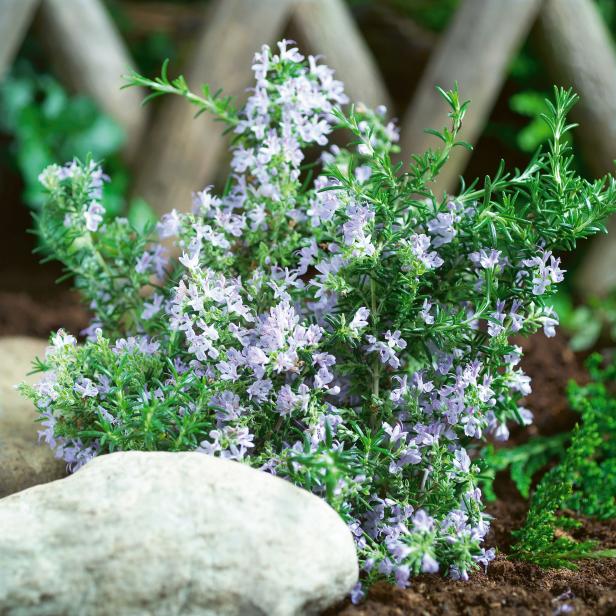
Ball Horticultural Company
'Tuscan Blue' rosemary is known for its beautiful and abundant blooms.
The 'Tuscan Blue' cultivar is grown for its abundant blue flowers in spring through summer. What it adds in beauty, it lacks in hardiness, being hardy only to zone 8. This is a good choice for those in warmer, drier climates.
Creeping rosemary is ideal for hanging baskets, growing for wreaths and for a fragrant groundcover. It has short, narrow leaves along low, creeping branches and grows to only 6 to 12 inches tall. This type isn't as suited to culinary uses but makes a great landscape plant.
More Mediterranean Herbs
These drought-tolerant edible perennials grow well together because they originated in the same place.
How to Grow Sage
A perennial with powerhouse properties as a companion plant in the vegetable garden and as a staple in the kitchen and apothecary, sage deserves a spot in your in-ground garden and in containers.
How to Plant, Grow and Care for Lavender
Grow lavender in your garden and you’ll be rewarded with colorful flowers, wonderful fragrance and a feast for pollinators — all from a low-maintenance plant.









